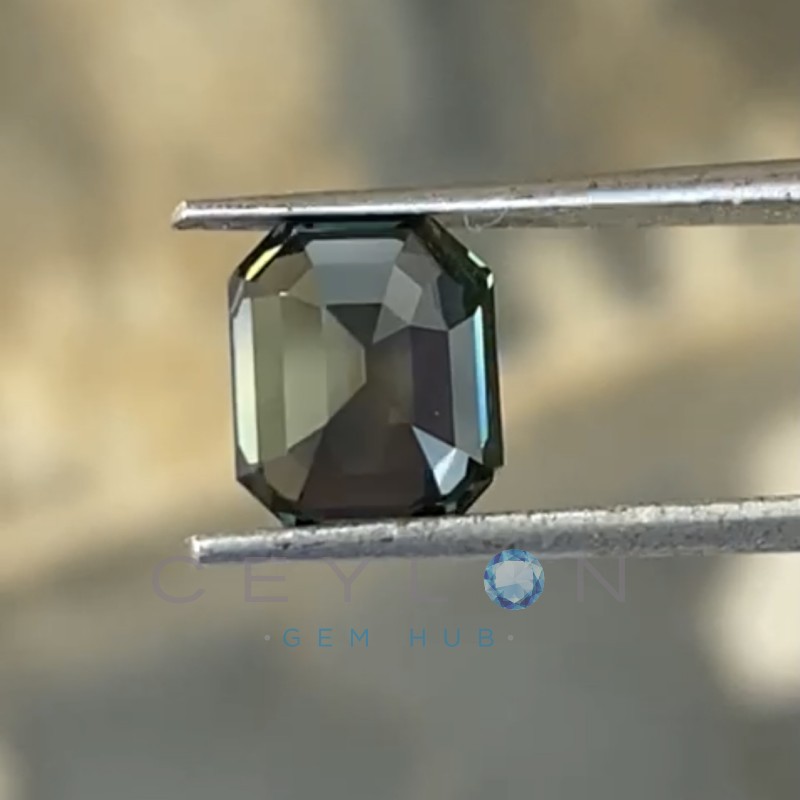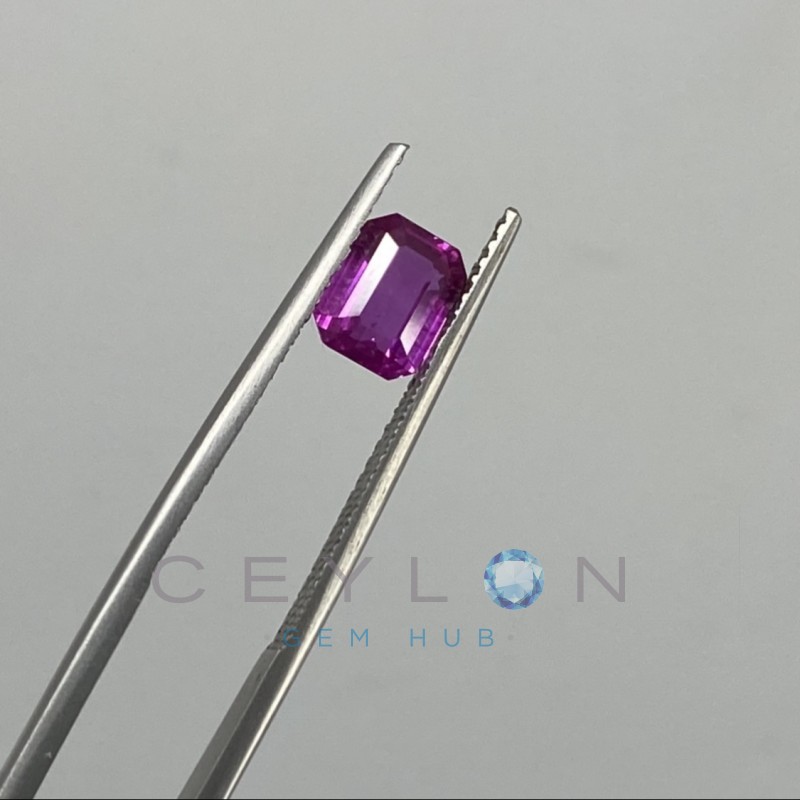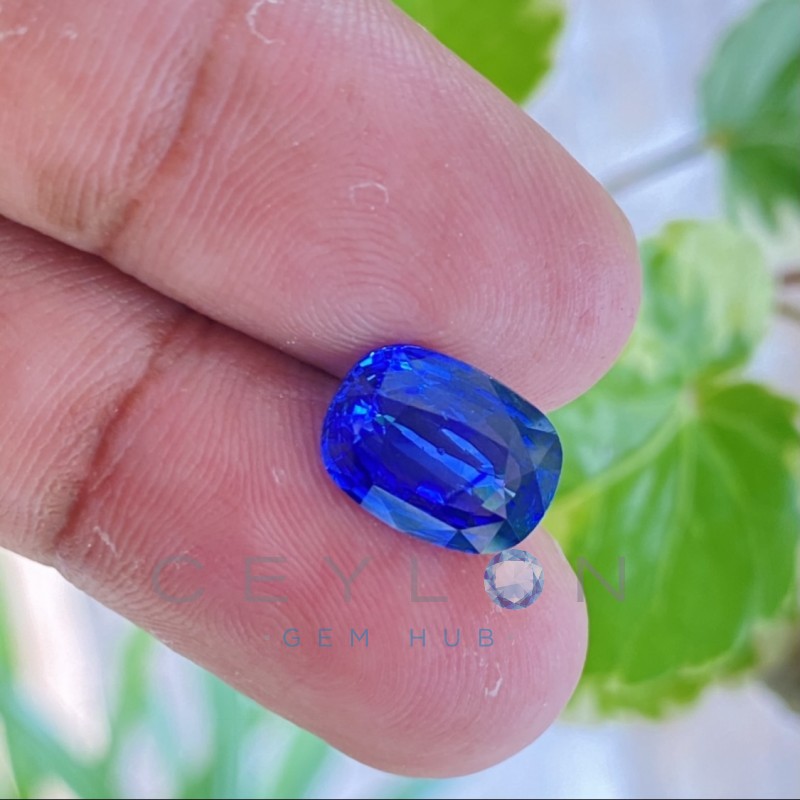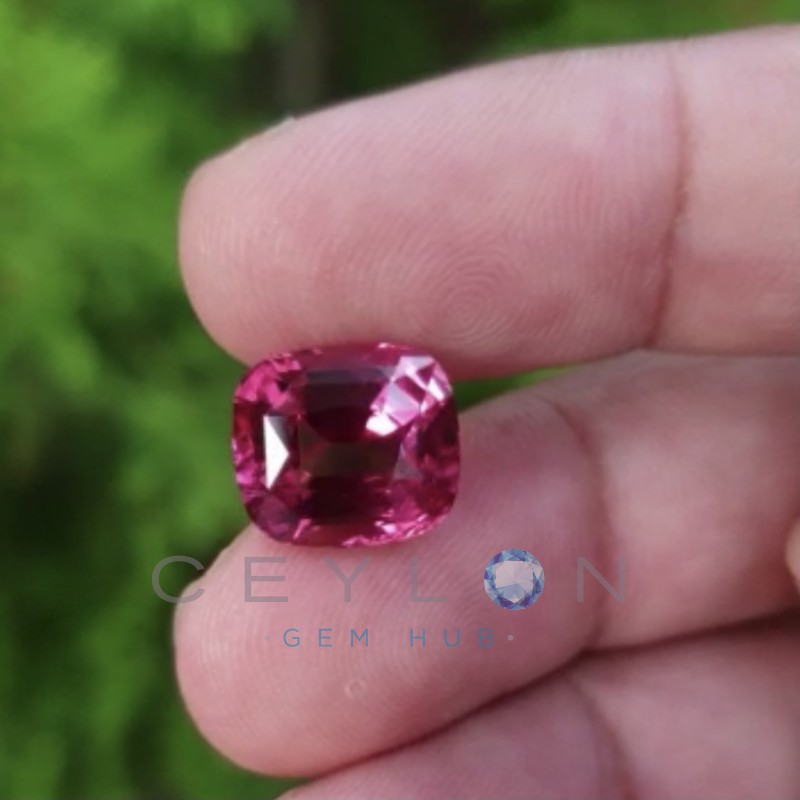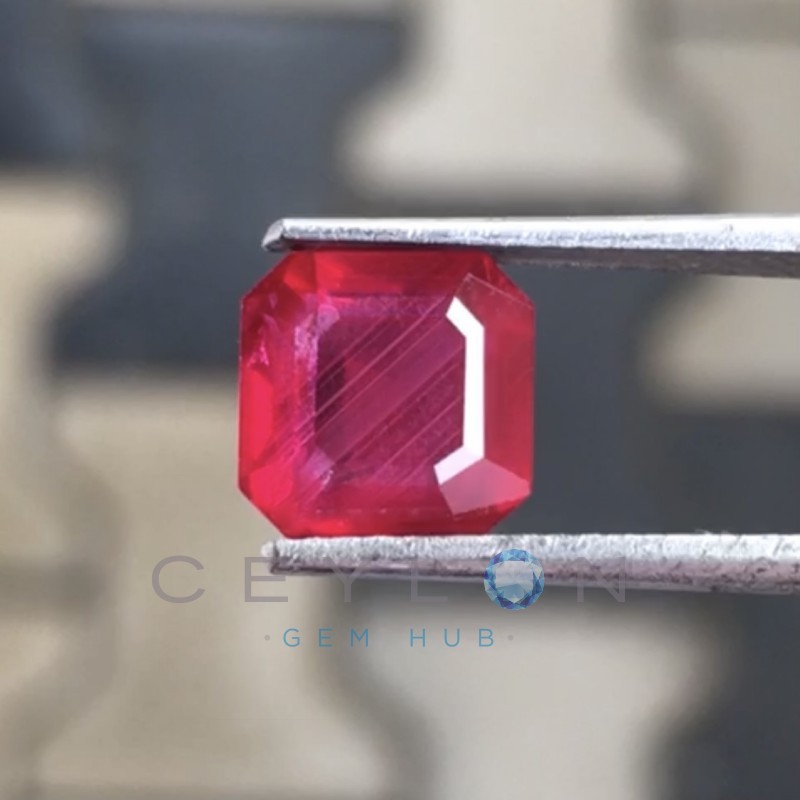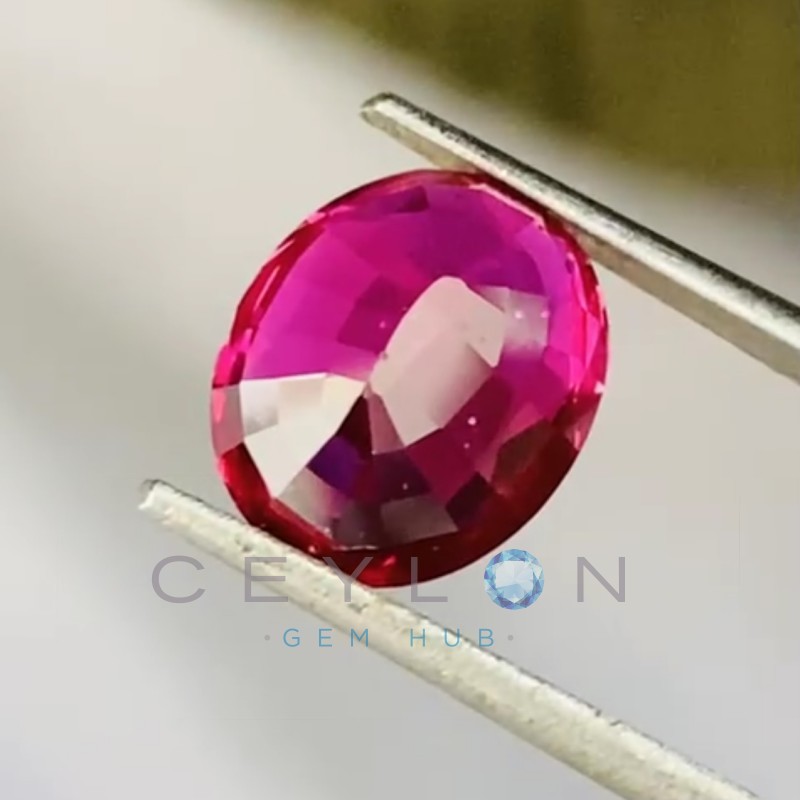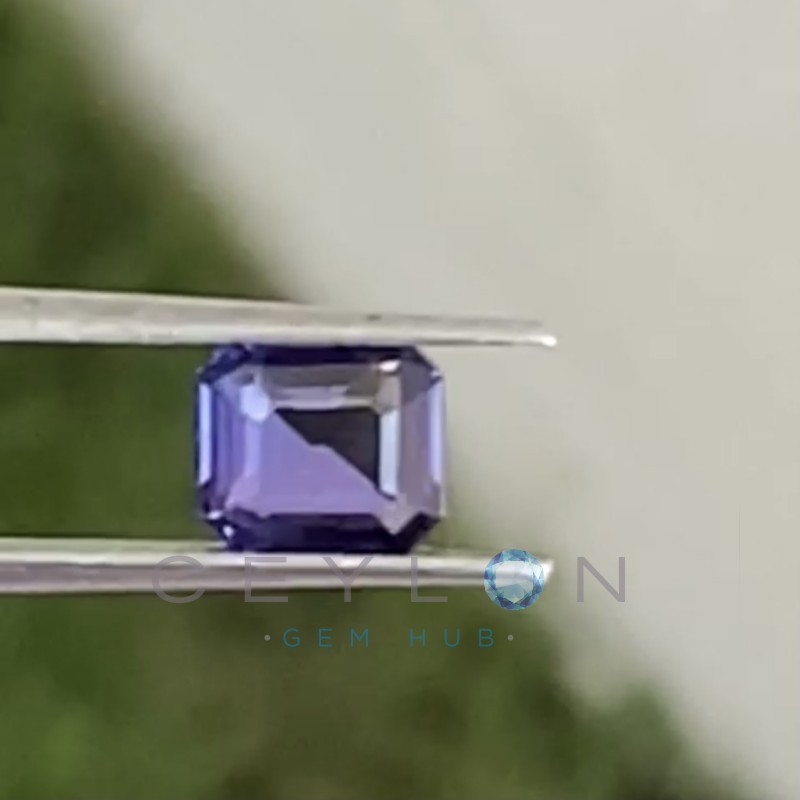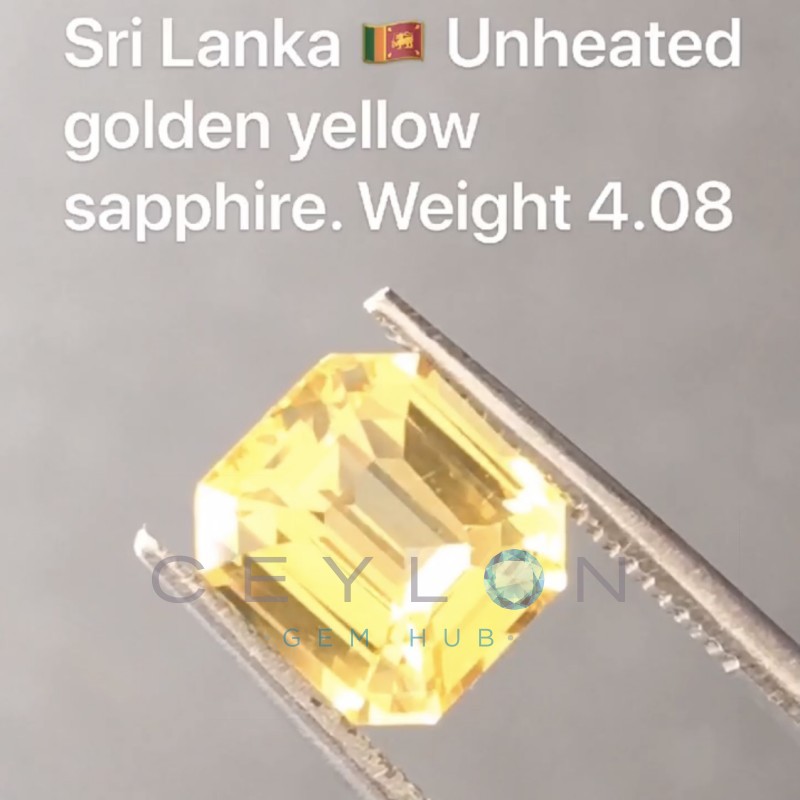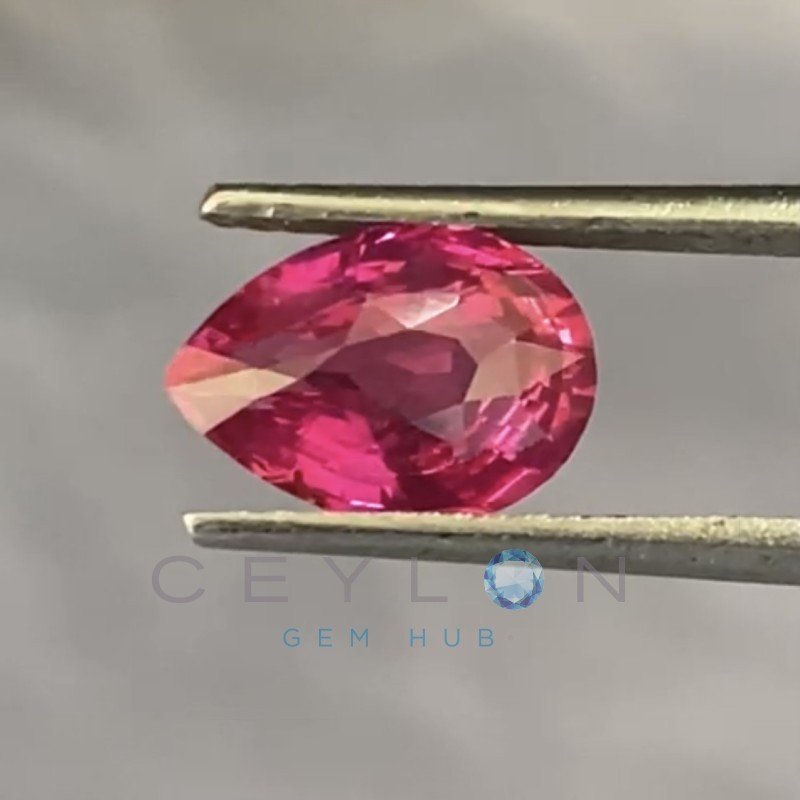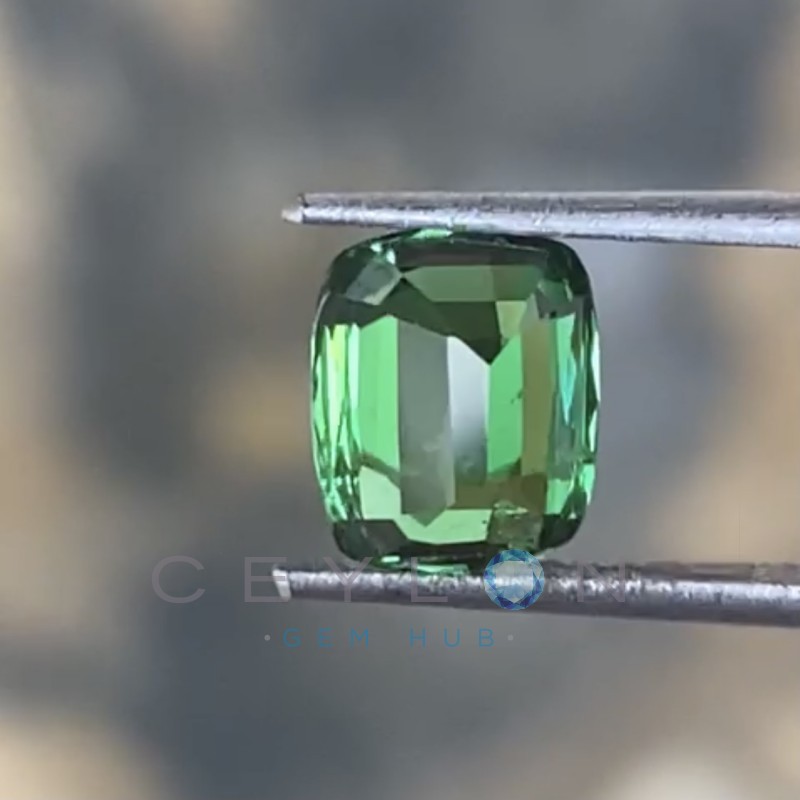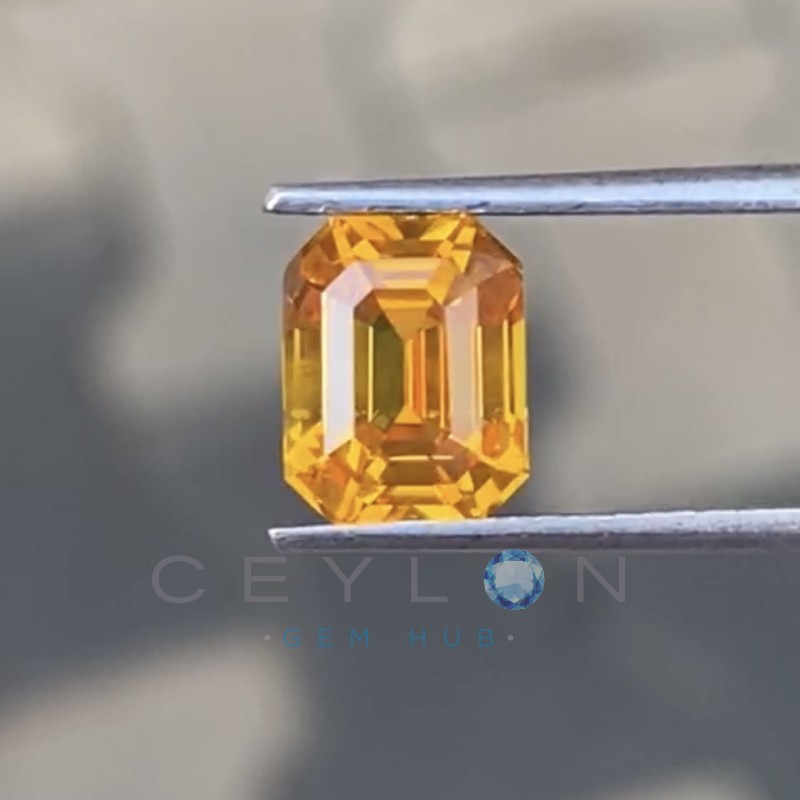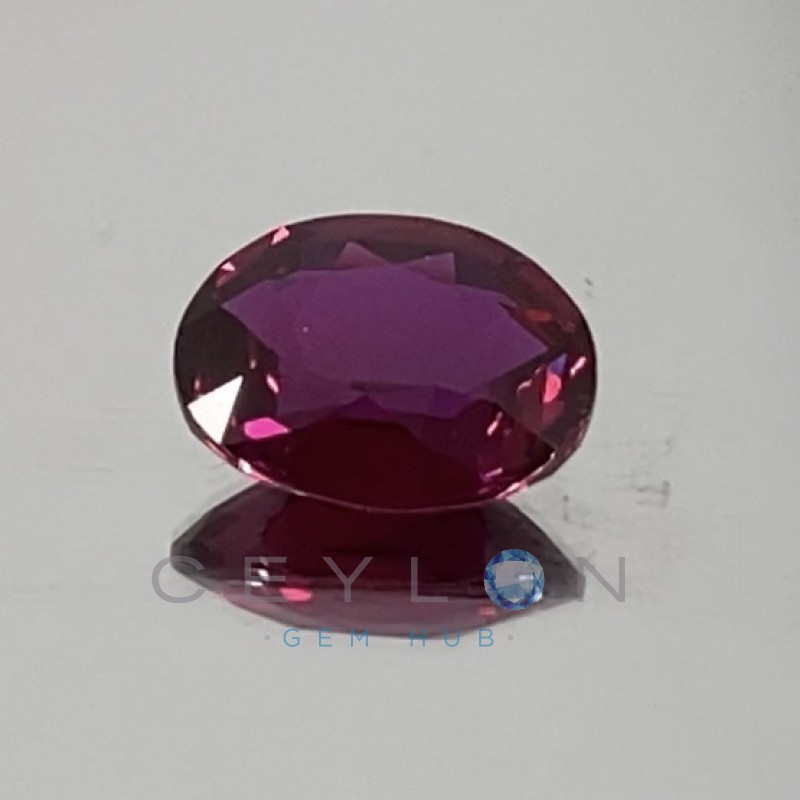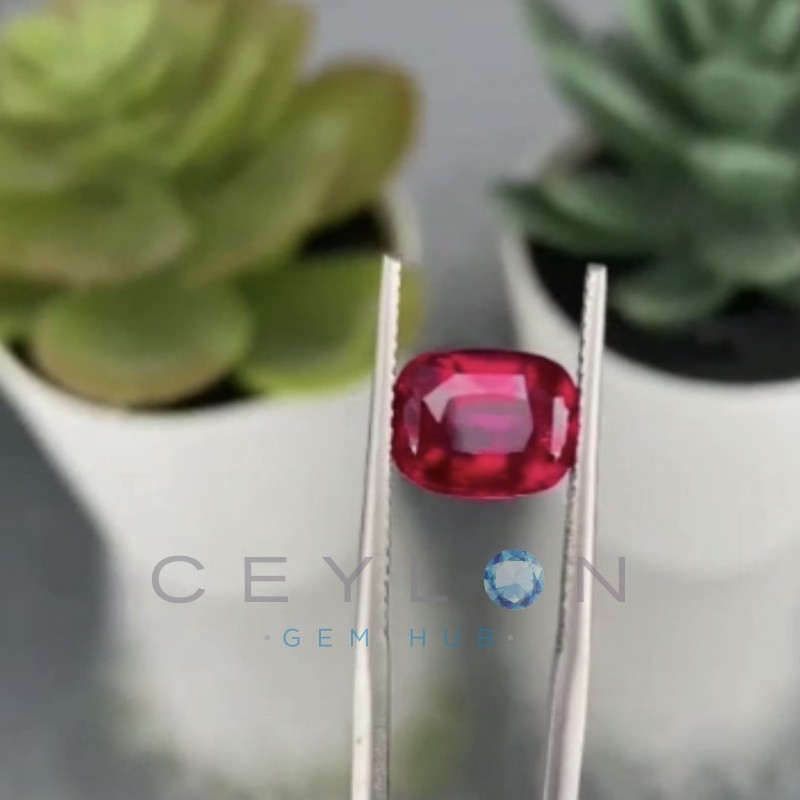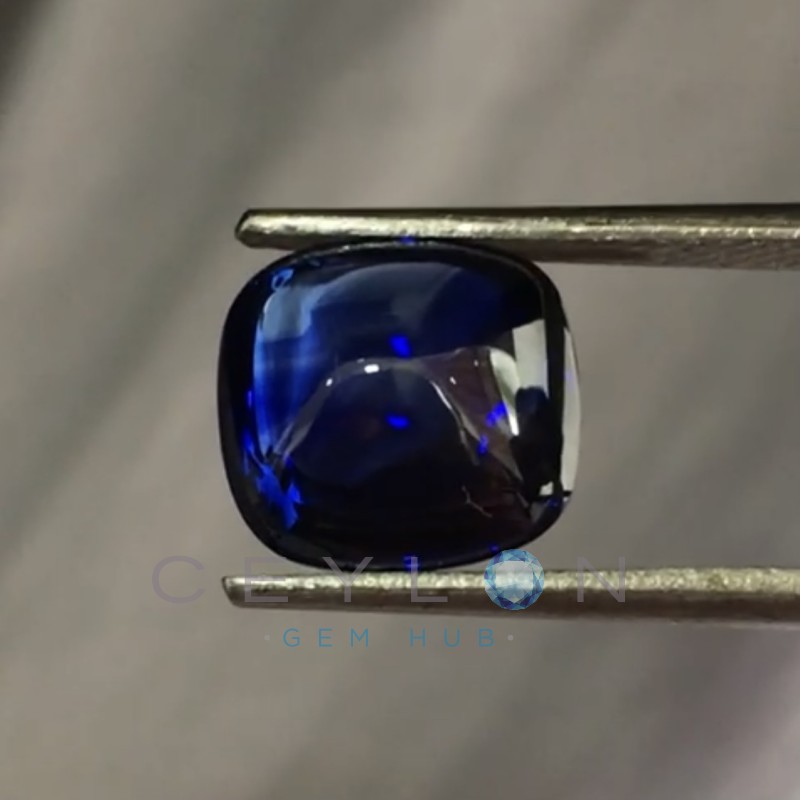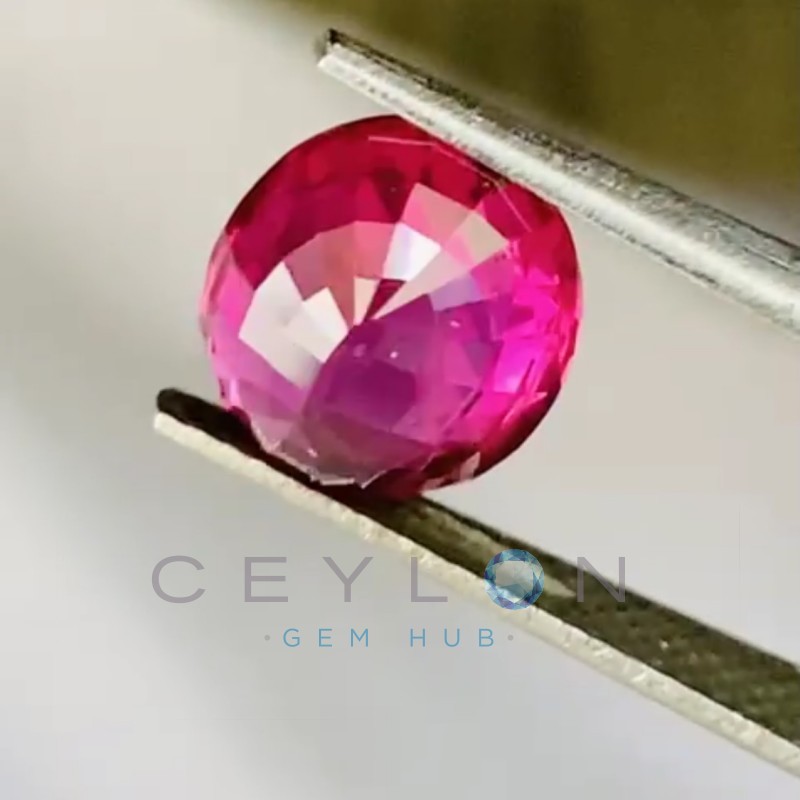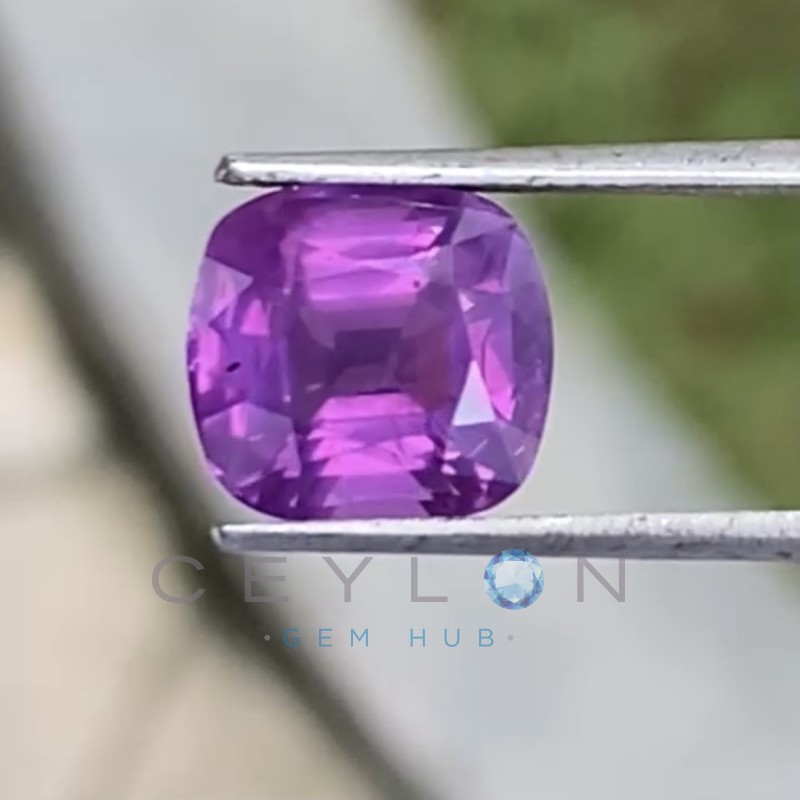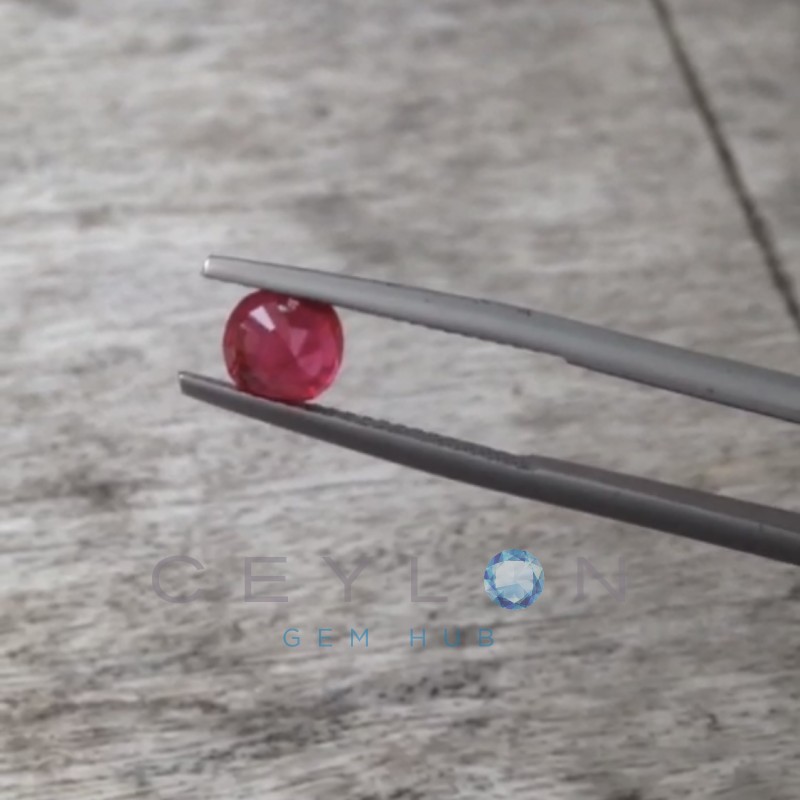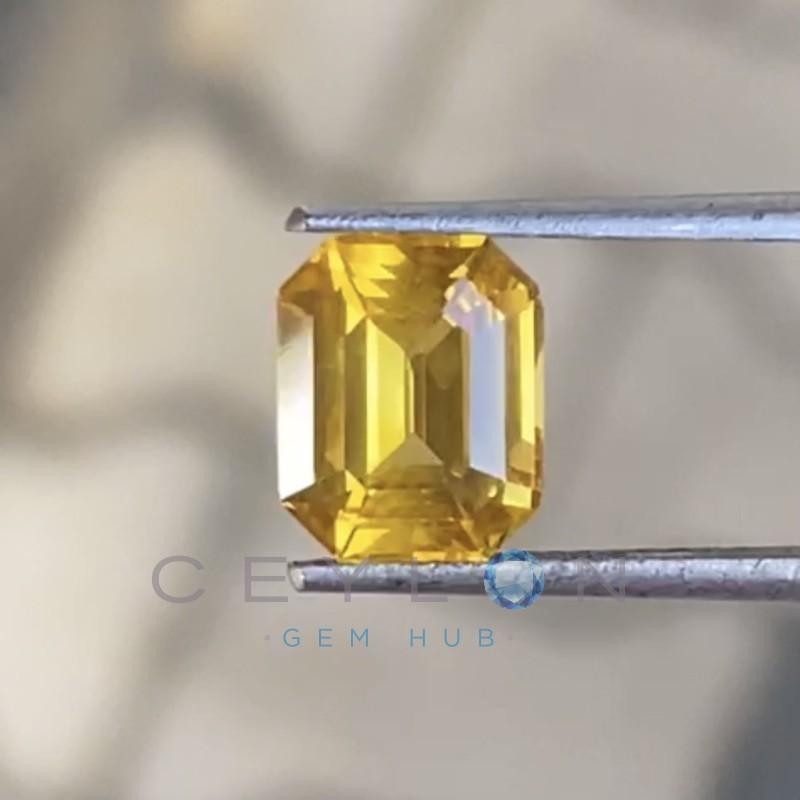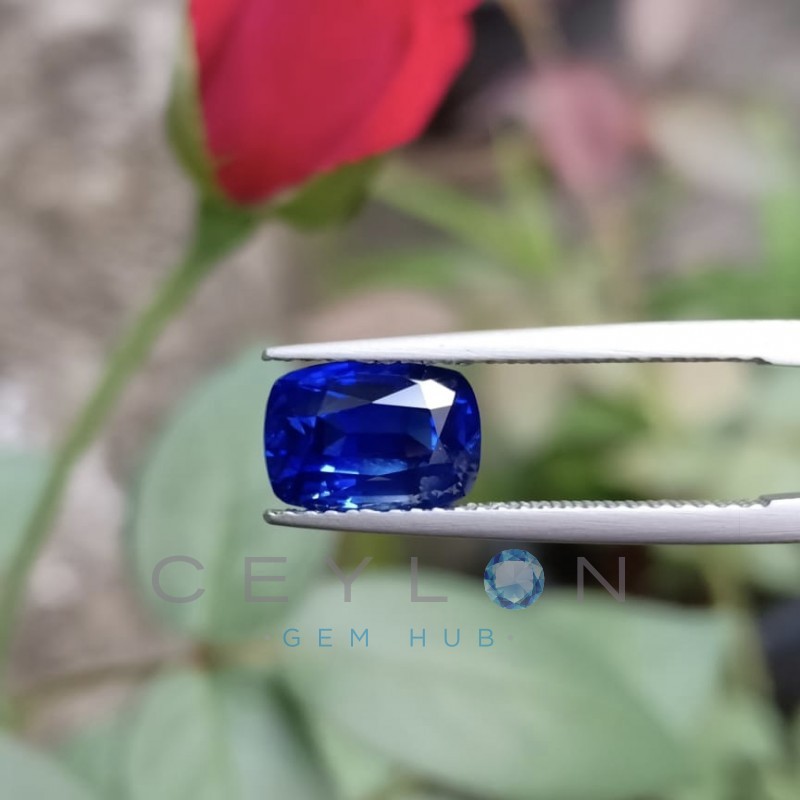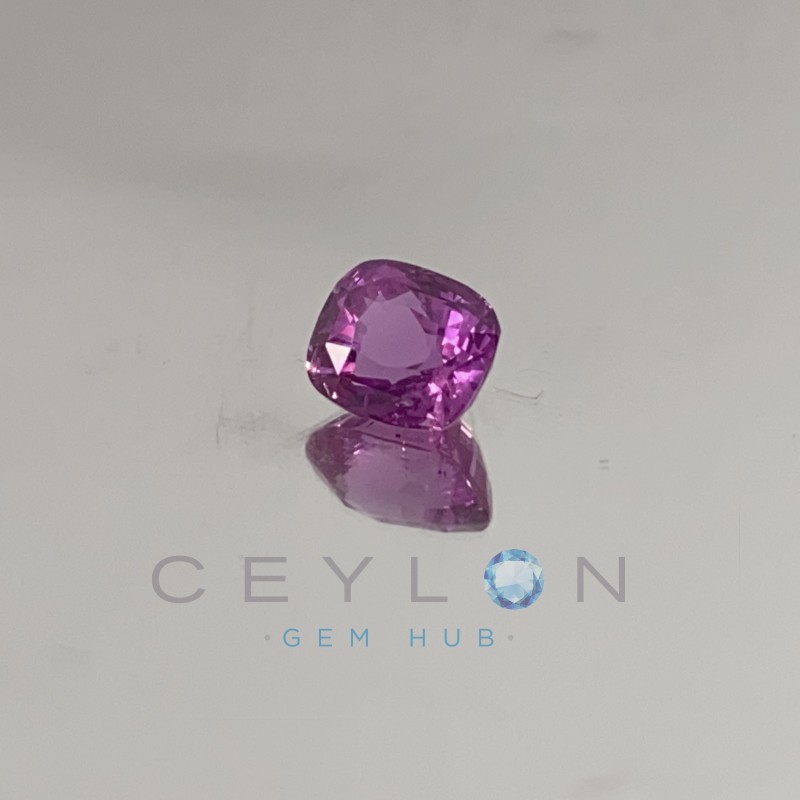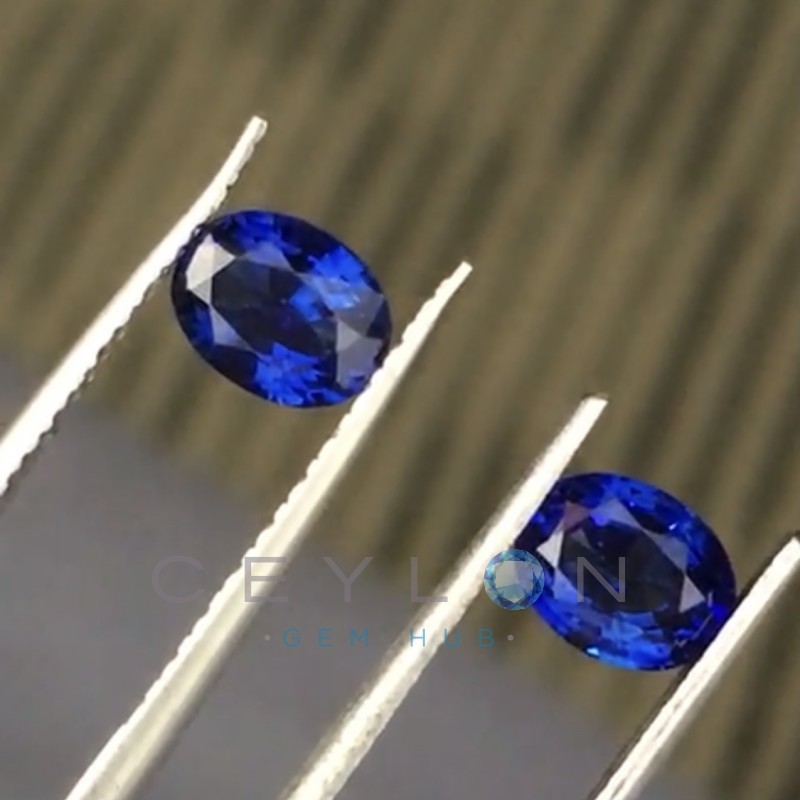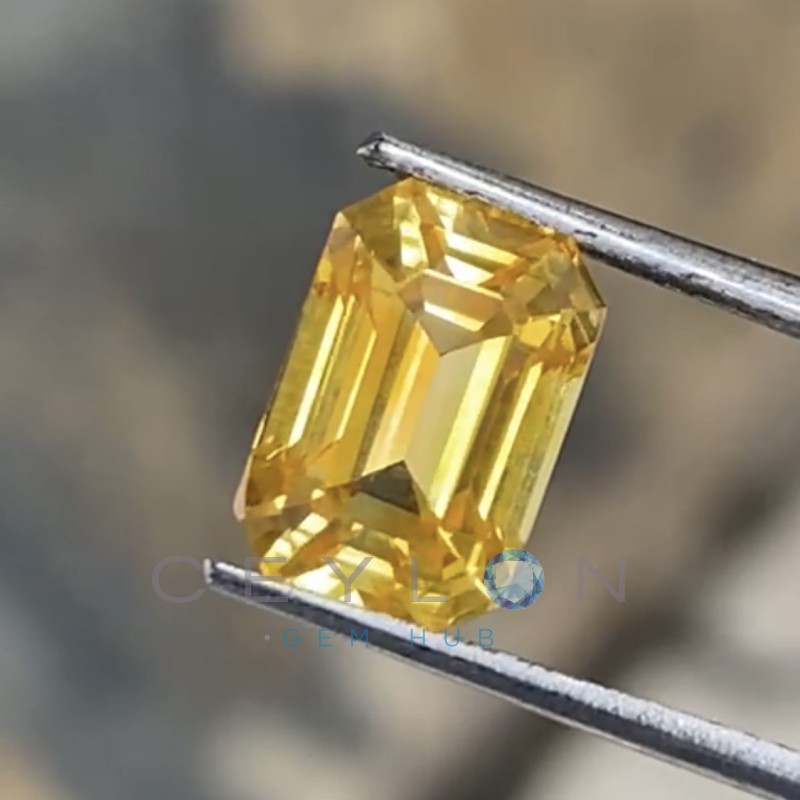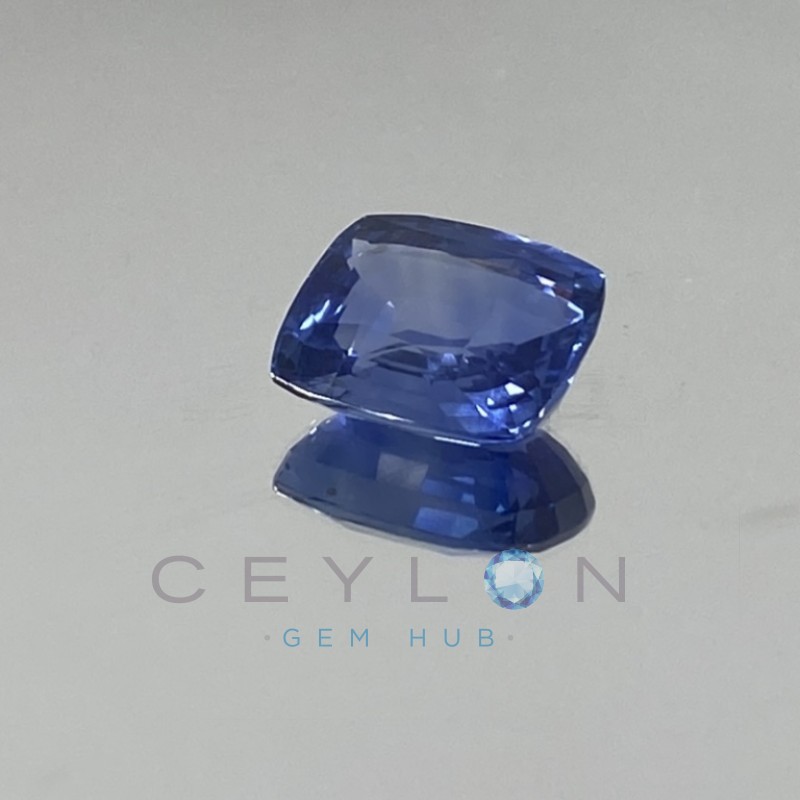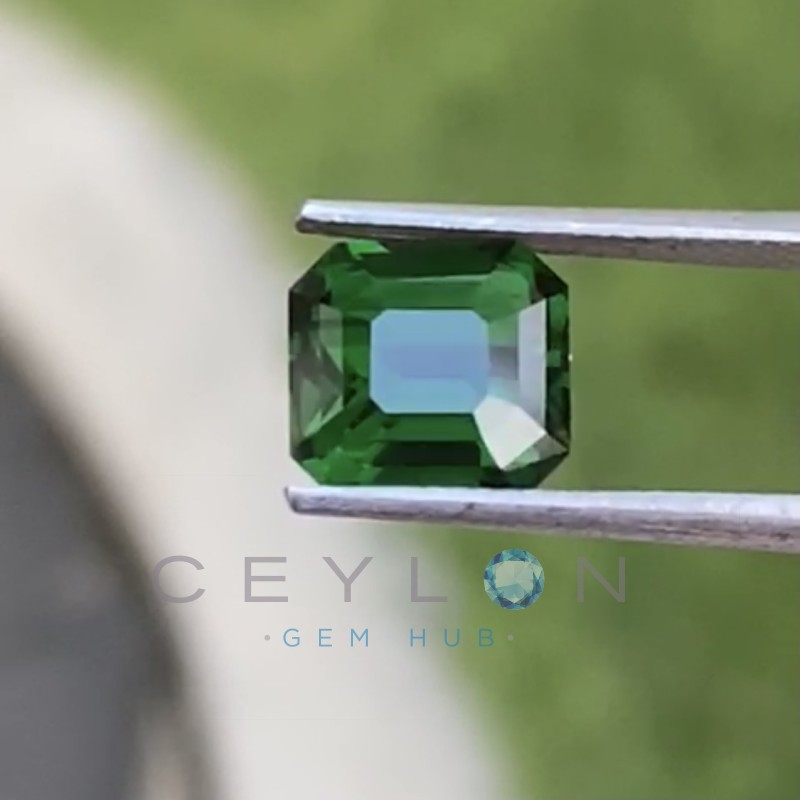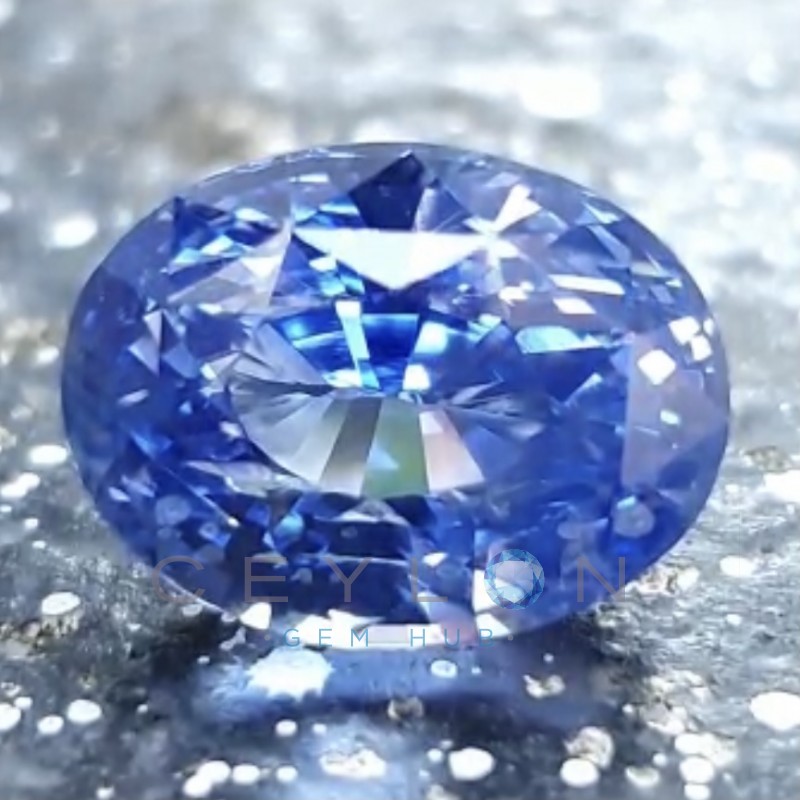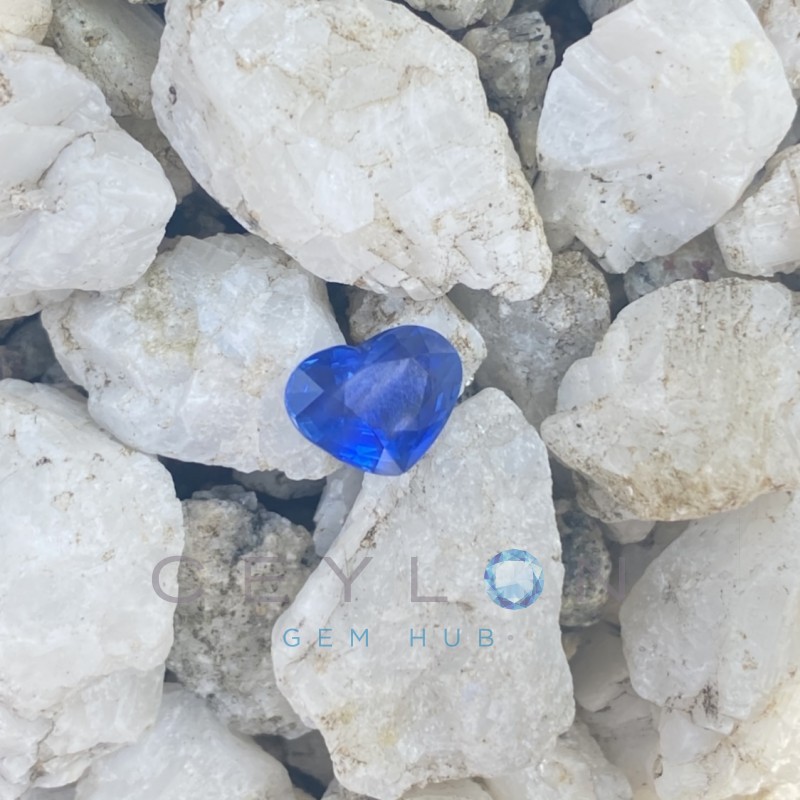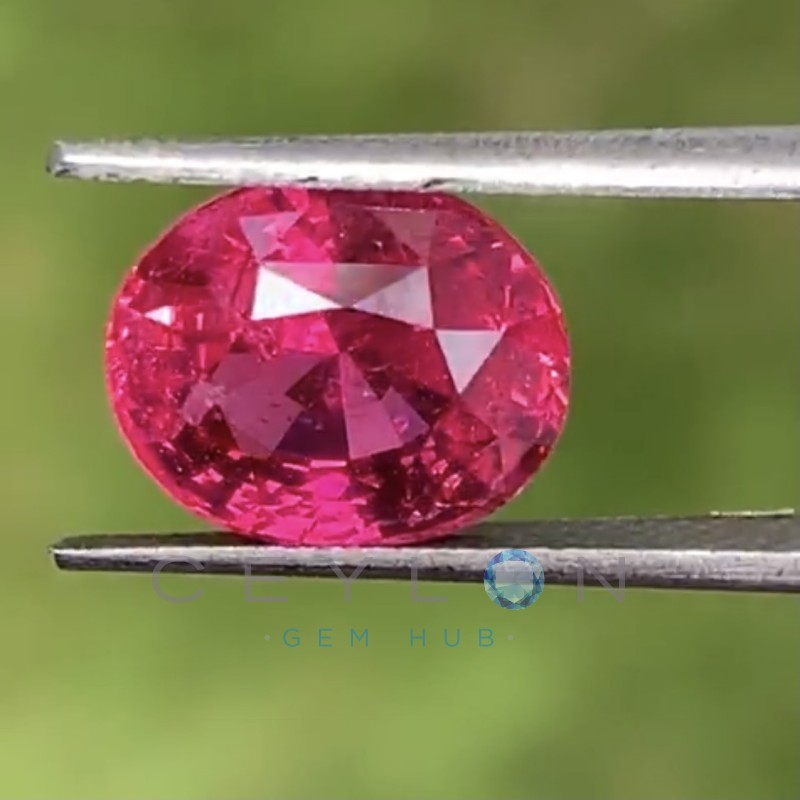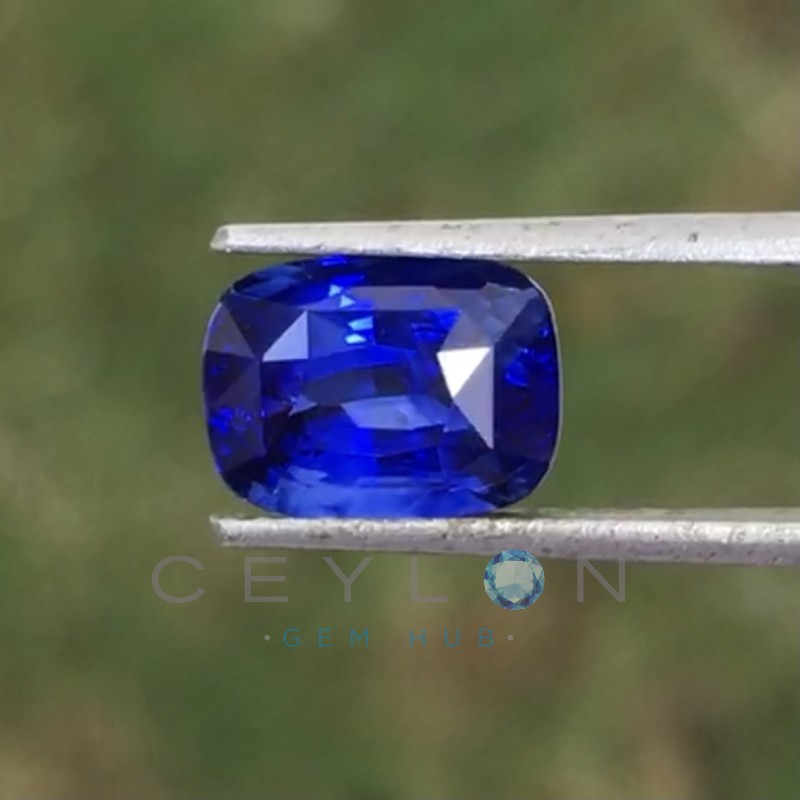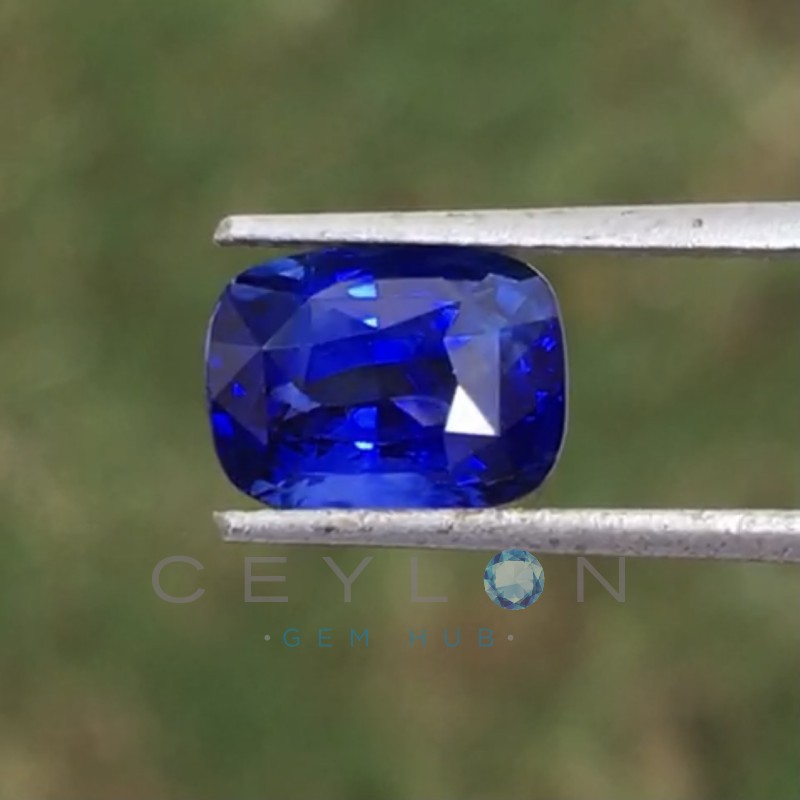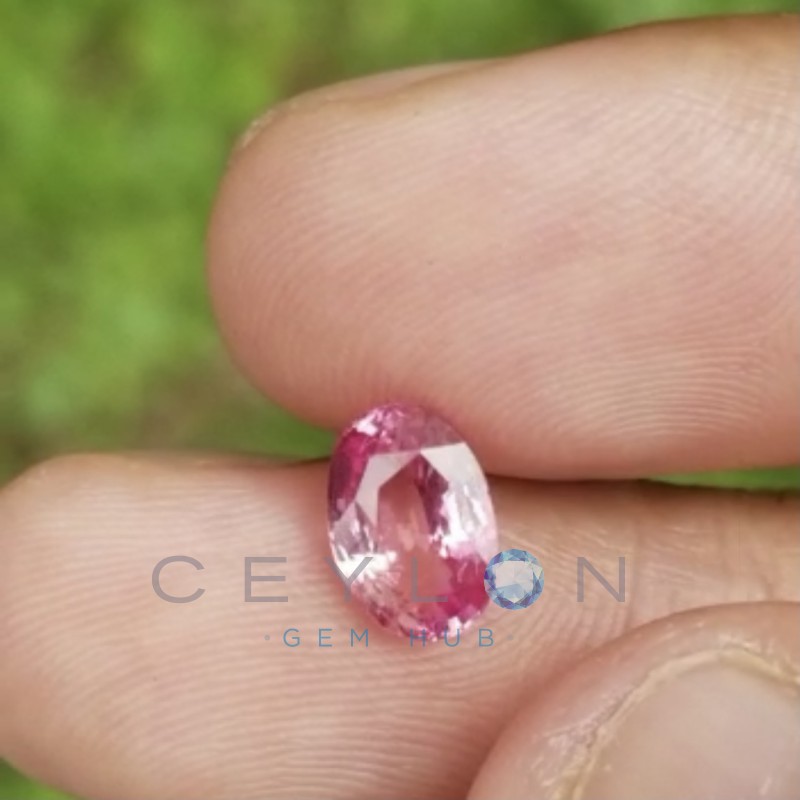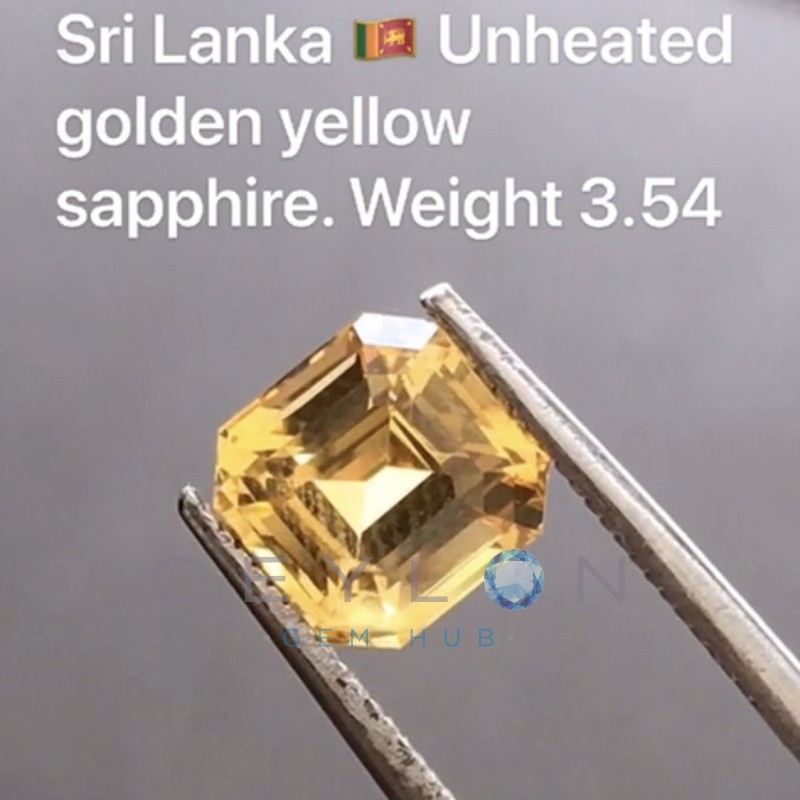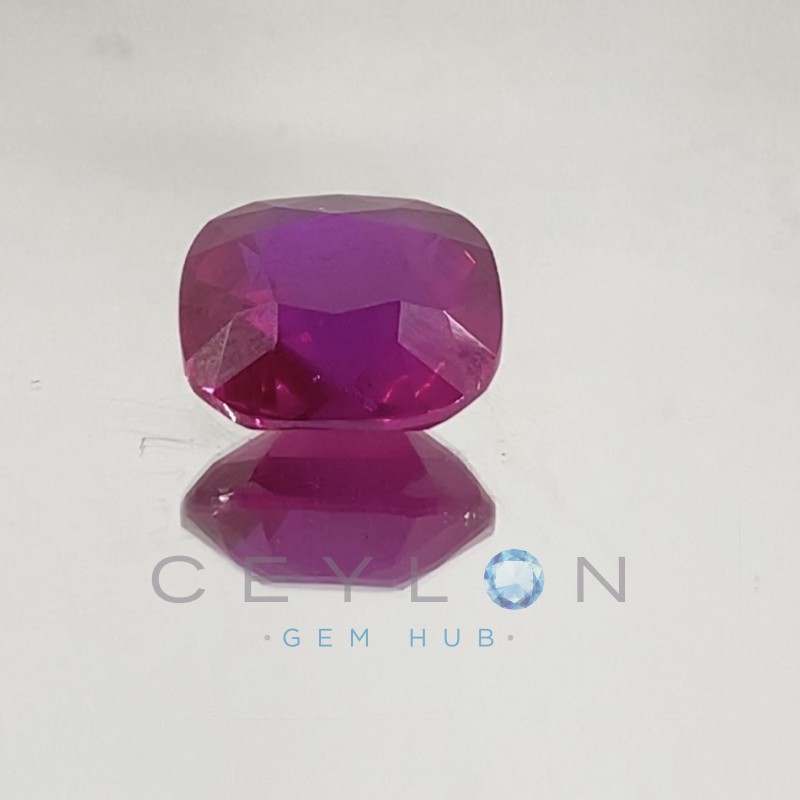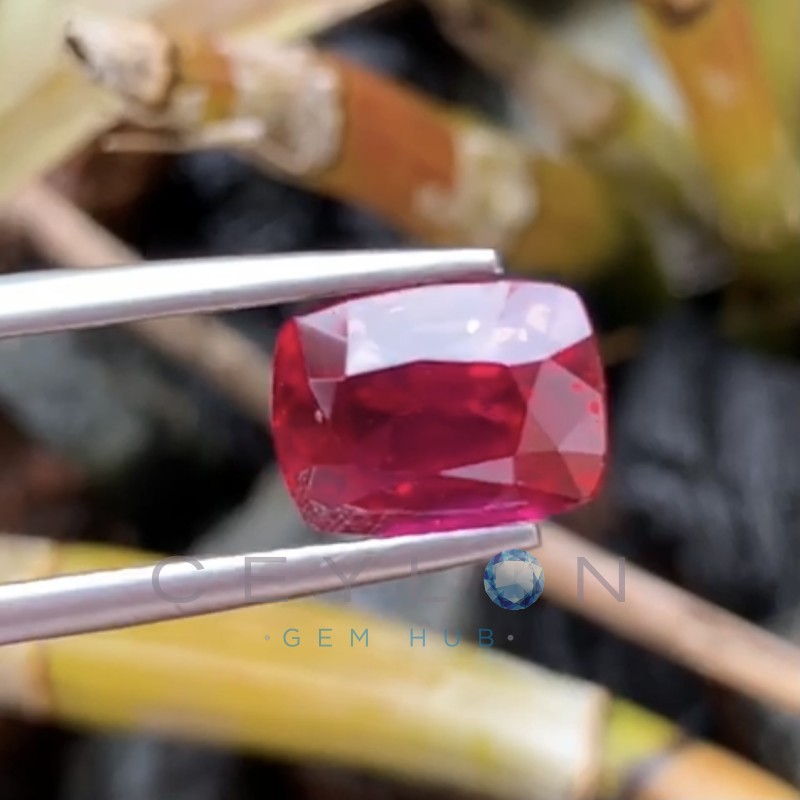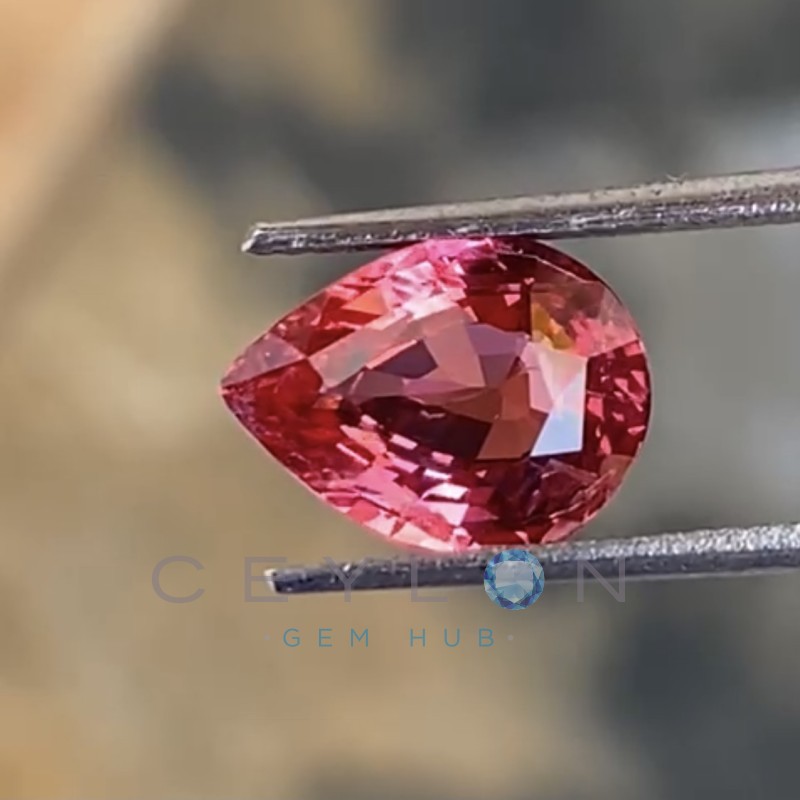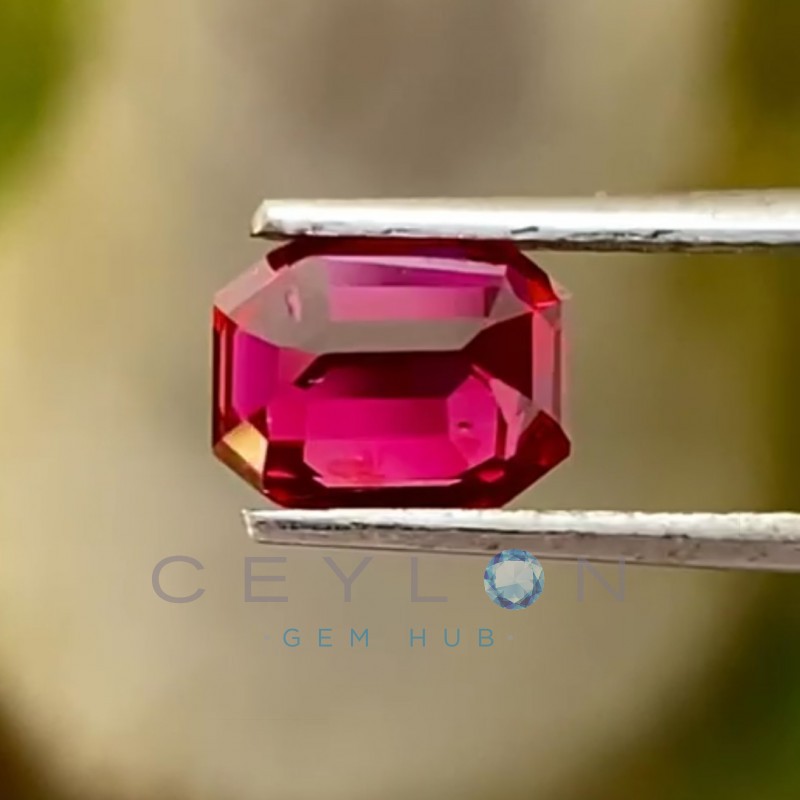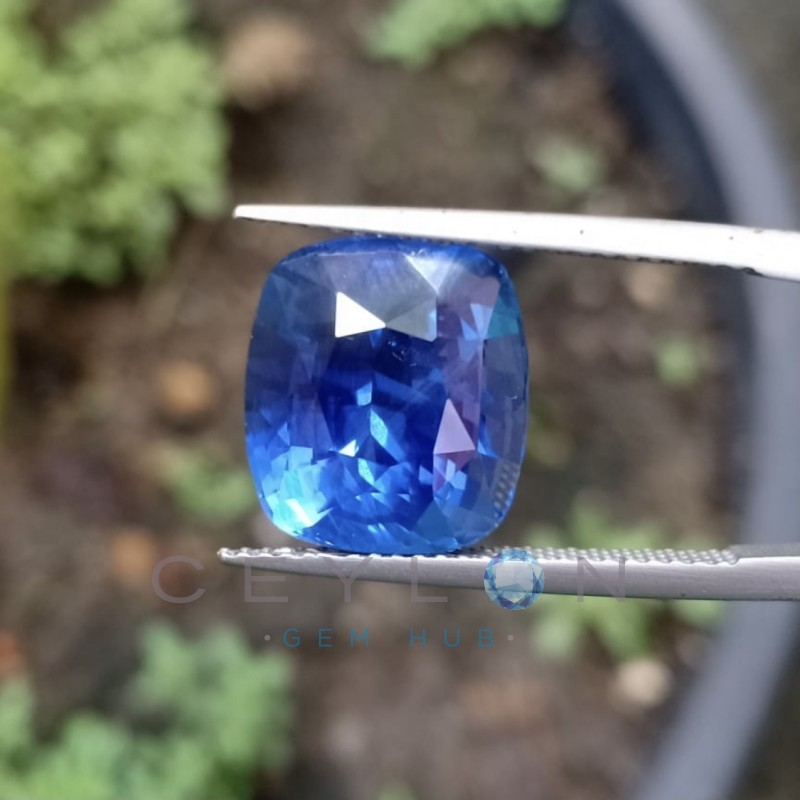1. Giant of the orient

Giant blue sapphire reportedly found near Adams Peak in Sri Lanka in 1902. A leading exporter at the time O.L.M Macan Marker & Co purchased the rough weighed more than 600 carats. The Local cutter worked the rough which went under cutting and polishing that transformed it into 466 ct. This impressive corn flower hued cushion cut blue colors is one of the rarest and it was the largest faceted blue sapphires of its kind at that time. With full saturation intense medium blue color and orange red under ultraviolet light, the stone valued $7000 back in 1902. Giant of the orient was out of the public eye for nearly 100 years. This stone has been sold to an anonymous American private collector in 1907 and quietly remained under radar until it appeared in Christie's Magnificent Jewels action catalog in May 2004.
Some experts believe that the stone had 20 carat discrepancies. Christie's auction catalog reflected either an error in the accuracy of the equipment of the time or a simple recording error. After the Christie's event which failed to obtain a price for the stone during the auction. Subsequently Christie received an offer and sold to anonymous British Buyer and the stone has not been since made public.
2. Logan Blue sapphire

Rich blue internally flawless blue sapphire weighing at 423 ct perhaps the second largest blue sapphire in the world. Sri Lanka has avoided exporting rough stones since ancient times. Logan sapphire originally found and cut in Sri Lanka which boasts the cutting and mining industry dating over two millennia. Presently this cushion cut sapphire is accompanied by 20 white diamonds giving marvelous sparkles to the stones. The cushion cut sapphire exhibit with violet overtone. According to the GIA's statement in 1997 the Logan sapphire color is purely occurred naturally and there were no evidence of the stone is heat treated. The stone under ultraviolet radiation unveil moderate reddish orange florescence. This stone is presently displayed at Smithsonian Institution's Natural Museum of Natural History.
3. Blue Bella of Asia
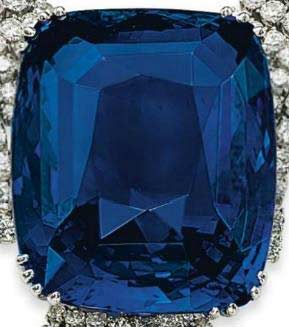
The blue bella of Asia is a 400 ct highly desirable corn flower Blue sapphire said to have found in a paddy field Rathnapura in 1926. The word "belle" refers to the extraordinary beauty of this enormous blue sapphire owned by Lord Naffield of Britain. This blue bella reappeared in Geneva Switzerland at Christie's Auction. The stone has been recut and had weight of 395.52 Carats mounted to a diamond necklace. The stone has sold for $17.29 Million highest price ever for a sapphire at an action in 2014.
4. Star of Lanka

The name resembles both the type and country of origin of the stone. The gemstone is blue milky sapphire with distinct sixed rayed stars. There is 60% possibility any blue sapphire weight over 100 carats will have Sri Lankan Origin. Authorities of Royal Ontario museum has accurately named the stone as Star of Lanka to avoid confusion among the visitors unlike in Smithsonian Museum of natural history where Sri Lankan origin star sapphire is named as star of India. This grayish-blue star sapphire is 193 carats and was discovered in the 20th century in Sri Lanka. This star of Lanka sapphire opaque and milky concealing the blue tone and displaying grayish blue color. The stone has oval, cabochon- cut high domed cut which parade six distinct pattern of rays that extend its arm down to the base. It was originally owned by Allan Kaplan who sold the gemstone to the Royal Ontario Museum in 1958.
5. Pride of Sri Lanka

This Gigantic 856 ct deep blue sapphire has told to be mined in Marapanna 3 km away from Rathnapura in 1998. This was mined in pits of Ms. Leelawathi Darmadasa a Major shareholder of this stone. She commented that there were previous cases, the mine in these areas has produced bigger and better stones before, yet those were sold in Black market to avoid tax. This stone came out in the right time where the tax concessions was given. The massive stone was publicly held inside a glass box at the exhibition at that time and then taken to separate place to display it to prospective buyers. This considered to be the one of the largest record blue sapphire found in Sri Lanka and the news about stone has not been surfaced ever since. This enormous stone is considered to represent the pride of Sri Lanka for contributing the largest blue sapphires to the world at the time.
6. Grayish Blue star of India
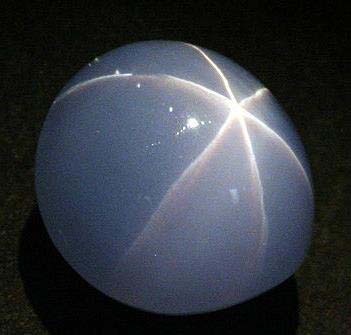
One of the largest grayish blue Star sapphire gems in the world. It is almost flawless weighing at 563 Carats. The specialty of this masterpiece is that it has stars on the both sides which is extremely rare for this size of sapphire. Though it was called the star of India this is actually discovered in Sri Lanka.
India does not have record of producing sapphire of this size in a long time and the puzzling question was how it got the name as star of India. The possible explanation was that the time the stone was found the Sri Lanka was under rule and Administered by the British East Indian company from Madras in India. The India being the proud and largest British administrated country known to the world, took the liberty of announcing the gem as the property British East Indian company which stuck to the name of the stone. The spectacular star sapphire is currently being housed in the hall of J.P. Morgan at American Museum of Natural History.
7. Naleem Alexandrite

Alexandrite gemstone is famous for its color under different lighting condition. The stone will appear reddish under incident light and green in normal sun light as our eyes are sensitive to the green color. This type of peculiar natured stones are extremely rare and invaluable. The Naleem alexandrite is exceptional size for this type of stone and unconfirmed suggestions claims to be largest alexandrite in the world weighing at 112 carats. The Alexandrite is sold by late famous gem business merchant from China fort, Beruwala Sri Lanka. The stone is named after seller and the philanthropic Al Haj Naleem is believed to be the most expensive of its kind in the world. This precious stones valued at over $100 million. The current owner of this unknown and the stone has not hit the radar since 2011.
8. Rosser Reeves star Ruby

Rosser Reeves star Ruby is one of the world's largest and finest star rubies found in Sri Lanka. This combines the rare feature of excellent color, good transparency and well defined star in a ruby for this caliber. This exquisite stone is renowned for its great color and well-defined star pattern. This stone initially weigh at140 Carats went and re-polishing to remove the scratches to become the famous 138 carat Rosser Reeves star Ruby. This star sapphire is an oval cabochon- cut with dome displays very precise Asterism. Generally all most all the star sapphires from Sri Lanka are blue to gray due to iron contamination making this astonishing Rosser reeves star ruby exception for it color and size. This ruby got the name by the onetime owner Rosser Revers who became the 34th president of United stats of America. Rosser Reeves bought this stone in 1950 which accompanied him wherever he travelled as he believed to stone of good luck. In the year of 1965 Mr. and Mrs. Rosser Reeves donated the star ruby which is now a prized possession displayed at Smithsonian Institution's National museum of Natural History.
9. Black Prince Ruby/ Spinel


This 170 carat red spinel is an extraordinary piece with a unique history that included the Black Prince Ruby. Though all the red transparent thought to be ruby in Monarch periods, the recent technological advancement revealed this as a Red Spinel. Eye catching uncut red spinel has been owned by the British family since 1367. The estimated value equivalent to GBP 10 Million in 2016.
Although the origin was unconfirmed it is believed to be originated from either Sri Lanka or Tajikistan. Richard III is also reported to have worn the Black Prince Spinel in his helmet at the Battle of Bosworth Field where he died. It now forms the centerpiece of the imperial state crown of Great Britain and is exhibited in the tower of London.
10. British Royal Jewel

The British Royal Jewel is a 105 carat Chrysoberyl cat's eye of exceptional quality, discovered in Sri Lanka. It acquired great fame when it was purchased for the British Royalty from a reputed London jeweler around 1900. It is said that this cat's eye was cherished by four British monarchs: Edward VII, George V, Edward VIII, and Queen Elizabeth II.
11. Empress Maria's Sapphire

This splendid oval cut Sri Lankan blue sapphire is 260.37 carats and was purchased by the Russian Emperor Alexander II in the London Great Exhibition of 1862 and presented to his wife Empress Maria Alexandro nova. This sapphire was subsequently made as a center price of brooch that also consisted 56 carats of diamond. The exceptional sapphire has the characteristics of priceless masterpiece for its color, cut, size and clarity. Contrasting to the stones of this size, the colour of the stone is evenly distributed and medium dark saturated blue color shared by highly priced stones. The stone has a dimension of 6cm x 5.3 cm. Two years after the death of Empress in 1880, the gem was donated to the State Diamond Fund of the Russian Federation where it is proudly displayed at their museum in Gokhran, Russia. This occupies as the 14th largest sapphire in the list of world's famous sapphires and 9th largest blue sapphire in the world.
12. Bismarck Sapphire

A 98.6 carat cornflower-blue cushion cut sapphire discovered in Sri Lanka back in 1920. This stone has the most desirable characteristics such deep corn flower blue, symmetrically cut, good transparency and perfect clarity. Some other sources says the stone is found in Burma and actually sold in Sri Lanka. The gemstone was gifted to Countess Mona von Bismarck, the fashion icon of that era, by her third husband Herrison Williams during their honeymoon in 1926. Mona von Bismarck donated the stone to the Smithsonian National Museum of Natural History in Washington, D.C. in 1967. The sapphire is mounted in a pendant at the front of the necklace consisting of single platinum chain connected by round brilliant cut diamonds and 8 smaller square cut sapphires evenly around the edges of the settings.
13. The Eye of the Lion

The priceless cabochon Chrysoberyl cat's eye is a spectacular gemstone with huge weight of 465 carats. This Chrysoberyl cat's eye gemstone was discovered in the late 1800's in Pelmadulla paddy field, in Rathnapura district of Sri Lanka. It was originally owned by a family descended from King Rajasinghe the first, who ruled the island nation from 1581 to 1593. This magnificent cat's eye is found in the paddy fields owned by the Iddamalgoda Kumarihamy an aristocratic Chieftain in the Sabaragamuwa Province and Chief Custodian of Saman Devale, a 750 year old temple serving the region.
The Grand Lady Iddamalgoda Kumarihamy had four daughters, and gifted the uncut Cats-Eye to her eldest daughter's husband from another prominent family in the area. The stone was preserved in its rough form and in turn inherited by his son and the first Grandson of Iddamalgoda Kumarihamy.
All over history, the lion has been a symbol of power often emblazoned on coats of arms, national flag of Sri Lanaka. The family appropriately named the gem "The Eye of the Lion" to represent these characteristic of bravery of the nation. Subsequently the Smithsonian expressed interest in acquiring the gemstone in 1978, nothing was heard of it for nearly three decades. The stone resurface in 2006 to AGTA gemological testing center's New York lab in the hands of gemstone dealer Jeffery Bergman of Primagem, Bangkok, Thailand.

14. The Star of Artaban

The Star of Artaban is a milky blue colour cabochon-cut star sapphire of 287 carat is a Sri Lankan origin. Contrast to sapphires which occurs with transparently the star of Artaban is transparency is obscured by the milkyness.
The name of the gem is based on the tale of "The Other Wise Man" by Henry van Dyke. The story's hero, Artaban, was a wise man from Persia who set out to join the Biblical Magi in their journey to see the newborn Jesus. He purchased three great gems, one of which was a sapphire, to present as a gift to the newborn king. He never achieved his goal, and gave his gems to the needy instead.
The gem was purchased by a member of the Georgia Mineral Society toward the end of 1943.It was later presented anonymously by the same family to the Smithsonian National Museum of Natural History in Washington, D.C.
15. Star of Bombay

The Star of Bombay is a 182 carat violet-blue star sapphire discovered in Sri Lanka. Given as a gift to Mary Pickford by her husband Douglas Fairbanks in the 1920's. She bequeathed the gemstone to the Smithsonian National Museum of Natural History in Washington, D.C., sometime before her death in 1979. Although the stone caries the name of a city in India this stone is discovered in Sri Lanka during the time of British rule where British East Indian Company exercised full control over the commerce of Sri Lanka. Due to this reason it stone obtained the name of British proudly ruled city in India.
The name itself make confusion among the visitors as the origin and the name differs. India has not produced blue sapphire of this caliber in a long period of time and Sri Lanka being producer of large sapphire is well known for centuries, where 17 out of 30 largest sapphires are of Sri Lankan origin.
Probability of a large blue sapphire weighing over 100 carats will have 60% chance that is from Sri Lanka are the arguments presented by the experts those believe this is as a proud treasure of Sri Lanka.
16. Midnight Star Sapphire

The Midnight Star Sapphire is a 116.75 carat is large deep purple-violet star sapphire. It was discovered in Sri Lanka in the 19th century. The term "midnight" is used to refer to black star sapphires as well as Mogok blue sapphires. However the origin of the name for this deep purple sapphire as midnight black is still mystifying.
The cutting of polishing of the midnight sapphire has probably taken place in Sri Lanka. The cutter must first decide whether the rough is a suitable candidate to be a star sapphire when he look into it which requires extensive experience. However the cutter who cut this midnight has known it with precision how the rough should be cut and polished to exhibit perfect asterism.
This stone was initially believed to be acquired by the George Fredrick Kunz towards the end of that century and sold to J.P. Morgan. Where he donated the Midnight Star to the American Museum of Natural History in New York in the 1900s.
17. Ray of Treasure
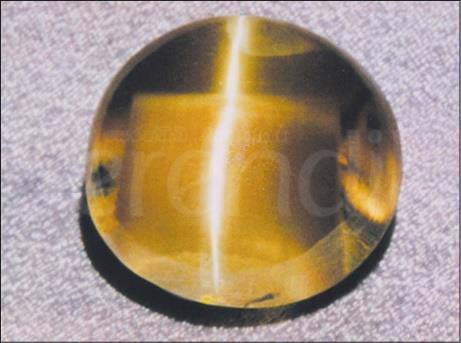
The Ray of Treasure is a 105 carat Chrysoberyl cat's eye discovered in Sri Lanka. This gemstone is a fine example of the most desirable qualities of a Milk and honey effect. The Excellent transparency of the stone and well defined silver ray makes this nearly a flawless specimen, its cuts and proportion make this a highly desired cat's Eye. Important feature of this stone is that the transparency and accurate ray it has for its size of 105 makes it a treasure which is cannot be found elsewhere. This is now at the proud possession of National Gem and Jewelry Authority (NGJA) in Sri Lanka.
18. Maharani Cat's Eye

The optical phenomenon of chatoyancy can be displayed by many gemstones, but the most popular and highly prized is that of the mineral chrysoberyl. The 58.19 carat honey coloured sharp band of light chrysoberyl cat's eye discovered in Sri Lanka is one of the finest gems of its kind. This cat's eye line is due to light reflected off of parallel inclusions of microscopic tubes or crystals of another mineral inside the Chrysoberyl. When a stone is cut with a domed top and flat bottom, called a cabochon, the reflected light is focused into a bright band that forms the "cat's eye" of gemstone. It is currently displayed in the Smithsonian National Museum of Natural History in Washington, D.C.
19. Timur Ruby/ Spinal

The Timur Ruby (also Khiraj-i-alam, "Tribute to the World") is an un-faceted, 361-carat polished spinal set in a necklace for Queen Victoria in 1853. This 361 carat red spinel discovered in Sri Lanka and was once thought to be a ruby. The gem was originally owned by the Mogul Emperors of India who had their name engraved on the stone. During the time of British rule the state of Punjab is adjoined Timur Ruby along with the Koh-i-Noor diamond is taken possession by the British in 1849. Later in the year 1951 the East Indian Company presented this Timur Ruby/ Spinal to the Queen Victoria at the time. This was set to necklace in 1853 and further the necklace was lengthened in 1911 after which it is rarely worn. The Timur Ruby now finds its home among the crown jewels of Great Britain owned by Queen Elizabeth.
20. Star of Adam
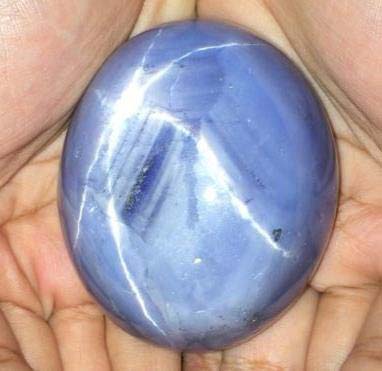
Star of Adam the largest blue star sapphire found in the world has taken the place of previous record holder that weighed 1395 carat that also had the origin. This massive sapphire is weighing at 1404.49 carat nearly 280 grams is presently held by the anonymous owner.
The gem has been certified by the Sri Lanka gemological institute as the largest blue sapphire that they have ever certified and valued at $100 million. The owner believes this can be sold for $175 at an auction. This enormous star sapphire is found in Rathnapura district and named after the Muslim belief that first man and the prophet is banished from Garden of Eden to the mountain called Adams Peak where large foot print is preserved.
Stones of this size are extremely rare researchers indicates that this stone could have found within the granite which can date back to 2 billion years. The stone could have reached 900 Co and over 9000 Atmospheric pressure which cooled over millions of years. The recent finding of this stone re-shed lights to the gem mining island of Sri Lanka.
21. Princess Diana engagement Ring
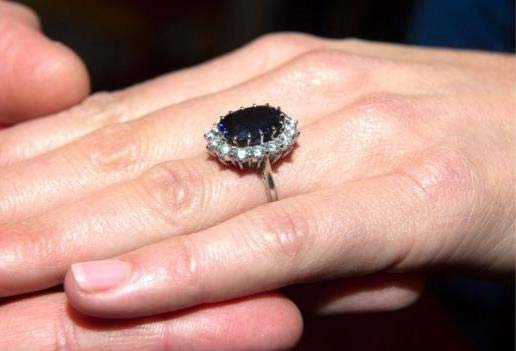
This engagement ring consisting 12 Carat oval shaped Royal blue sapphire of Sri Lankan origin surrounded by 14 solitary diamonds set in 18 Karat White gold. Sri Lanka always had is dazzling reputations for sapphires. The finest example being the stoned embalmed to the engagement ring to covey the love of Royal family of England and wales. This engagement ring is made into the hands of Princess Diana in 1981 when engaged to Prince Charles. During the visit the princes said to have chosen this stone by herself where Prince Charles bought it for simply because she loved it when she first saw it.
The stone is inherited by prince Williams and presently held by Princess Kate Middleton as the engagement ring. It was said the ring was resized to fit her finger as the Princess Kate lost weight.


